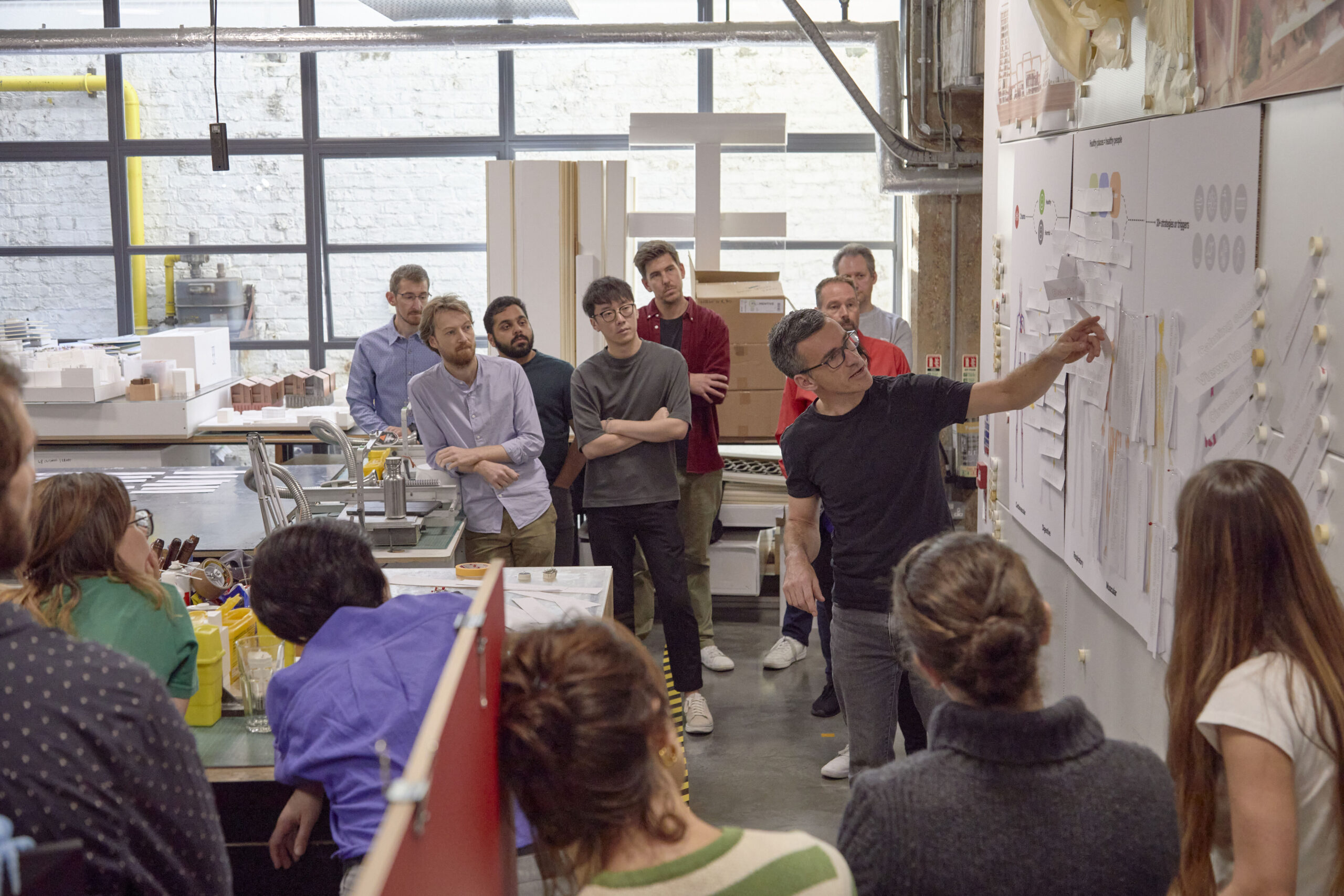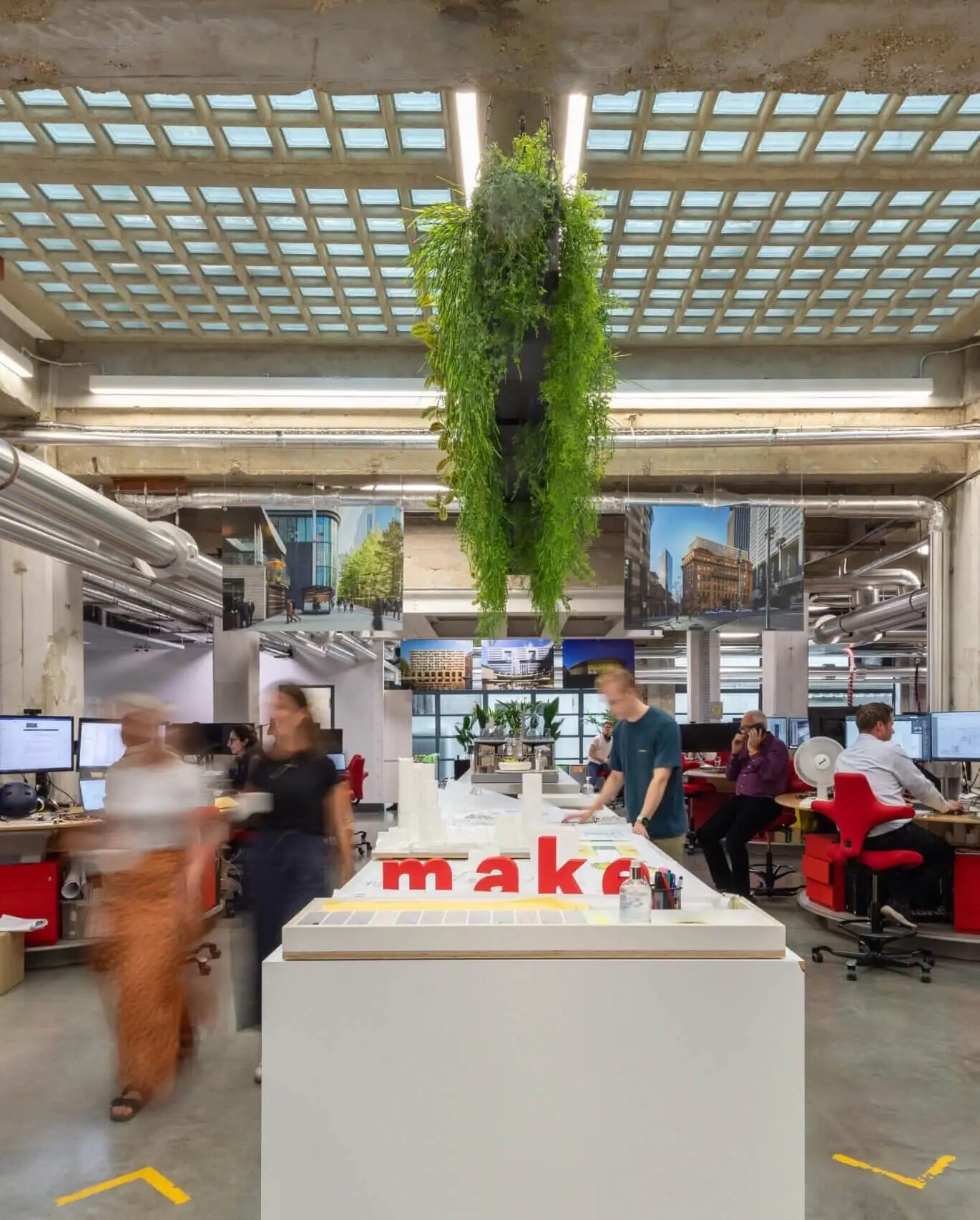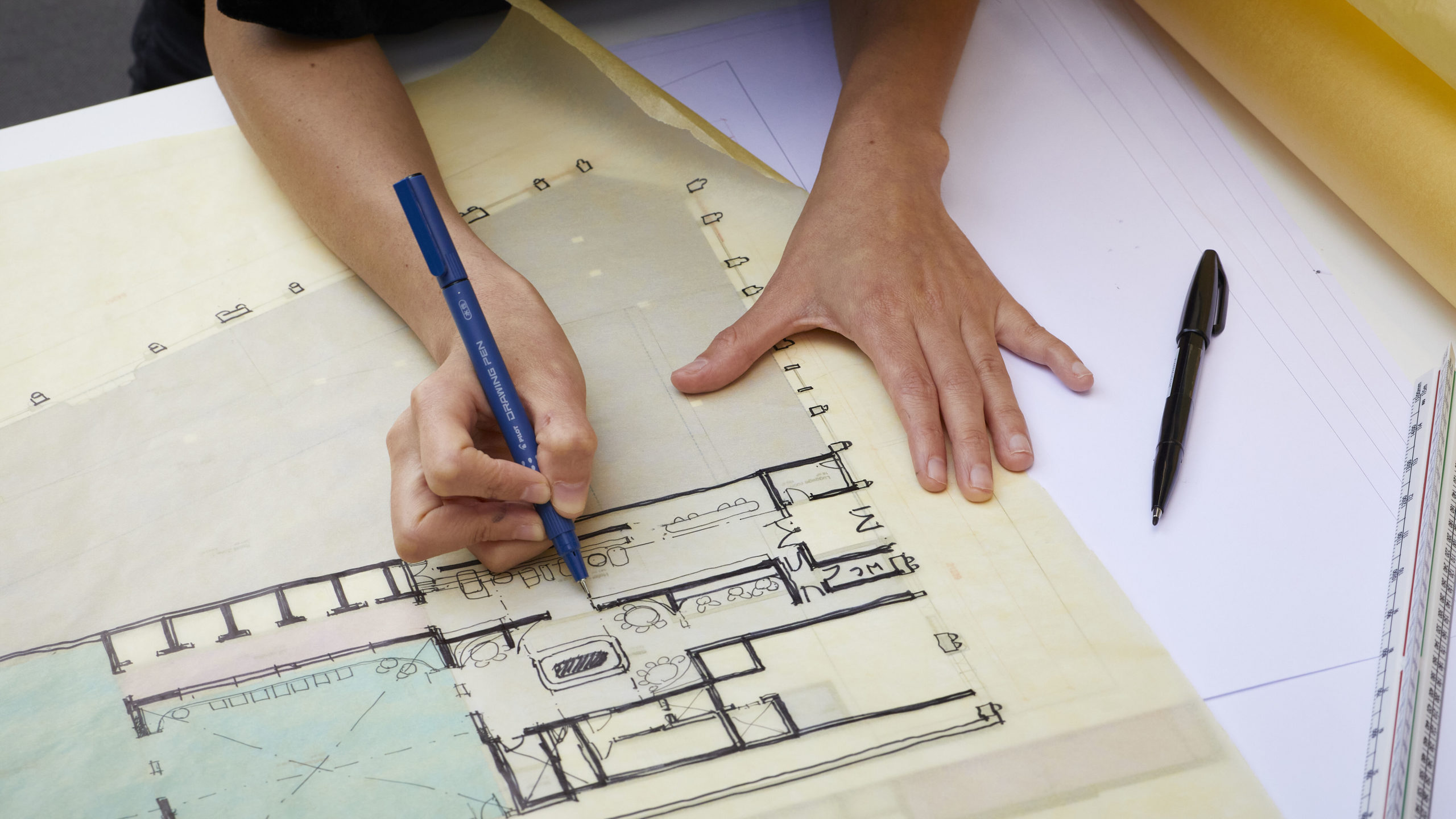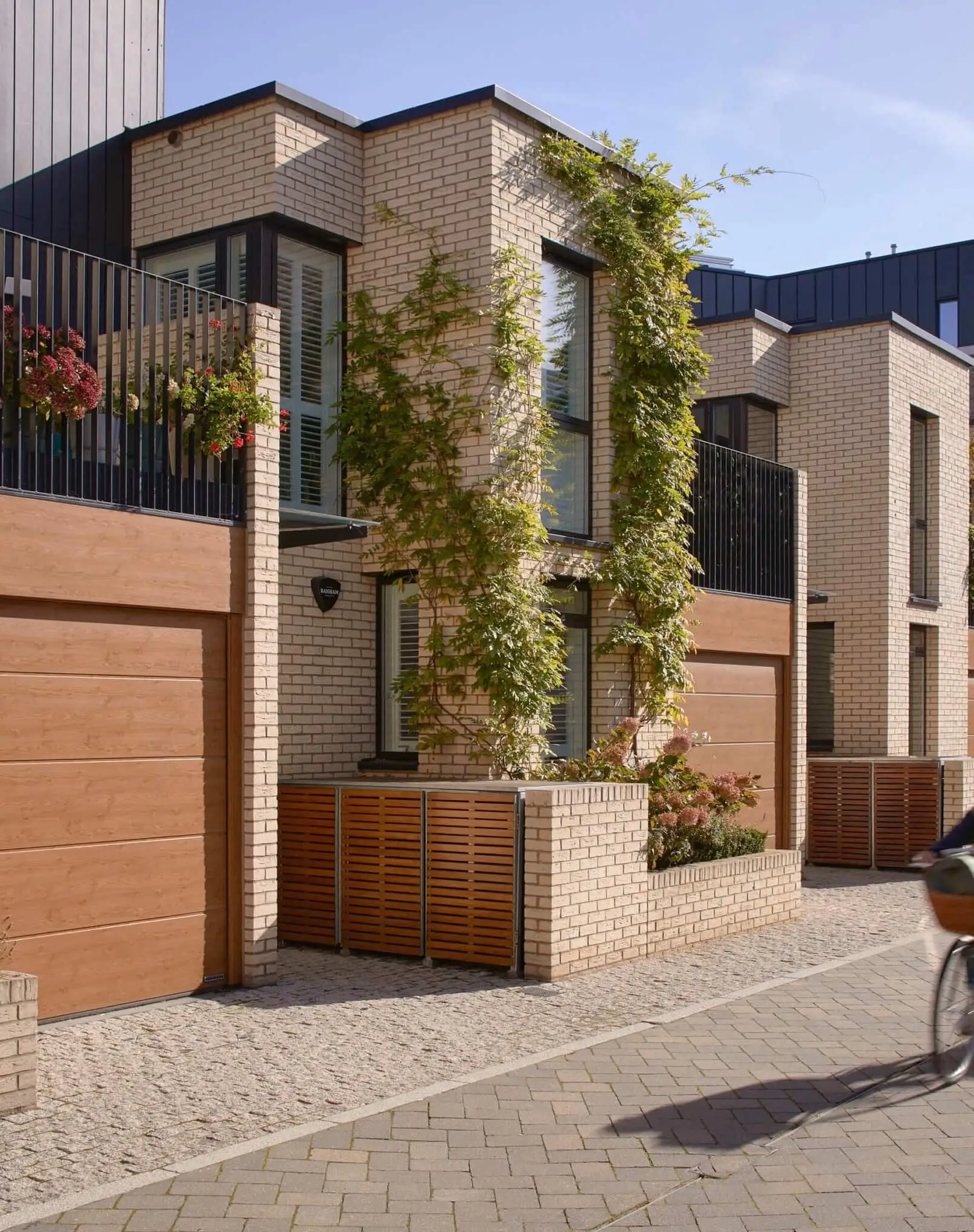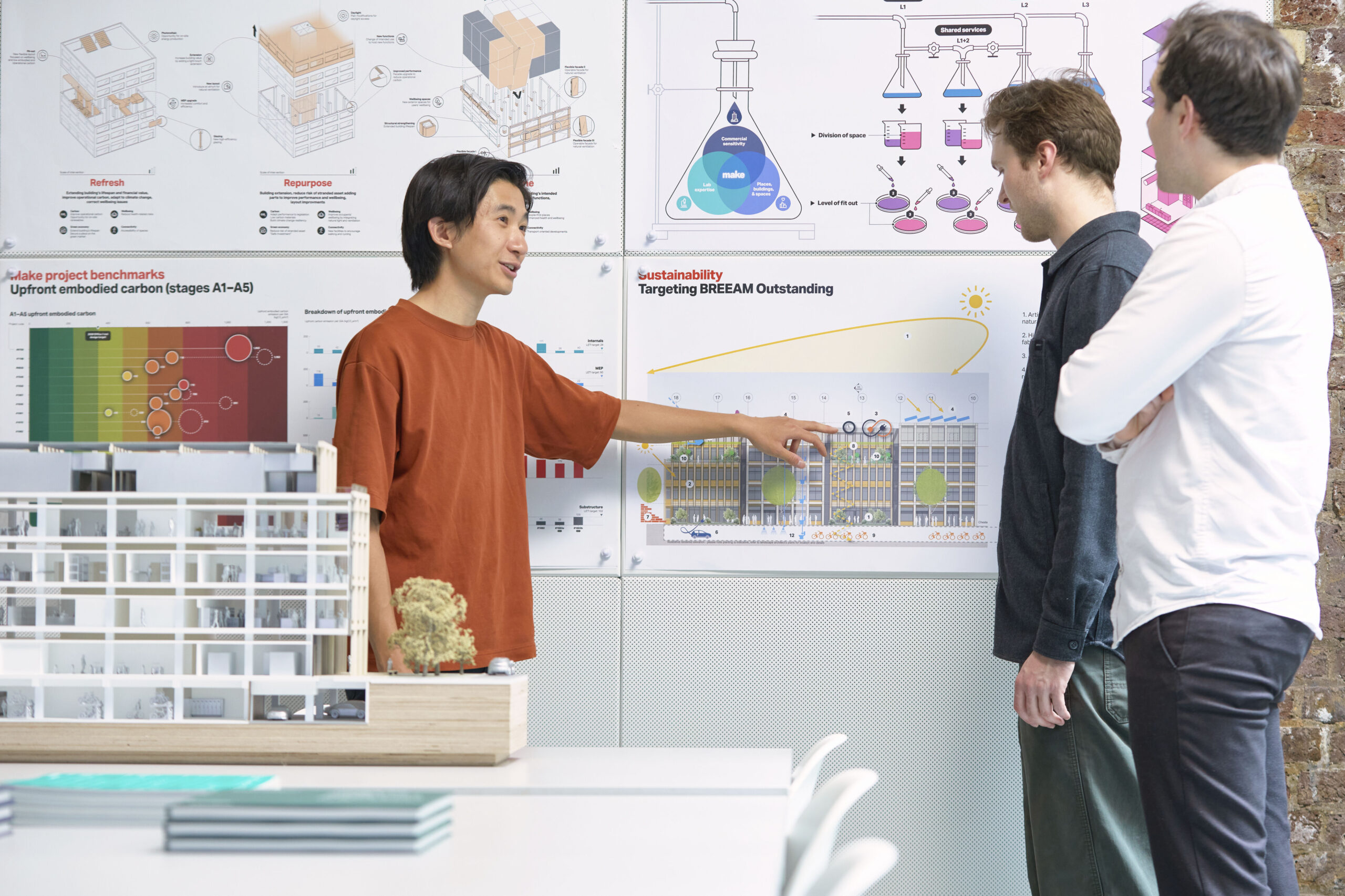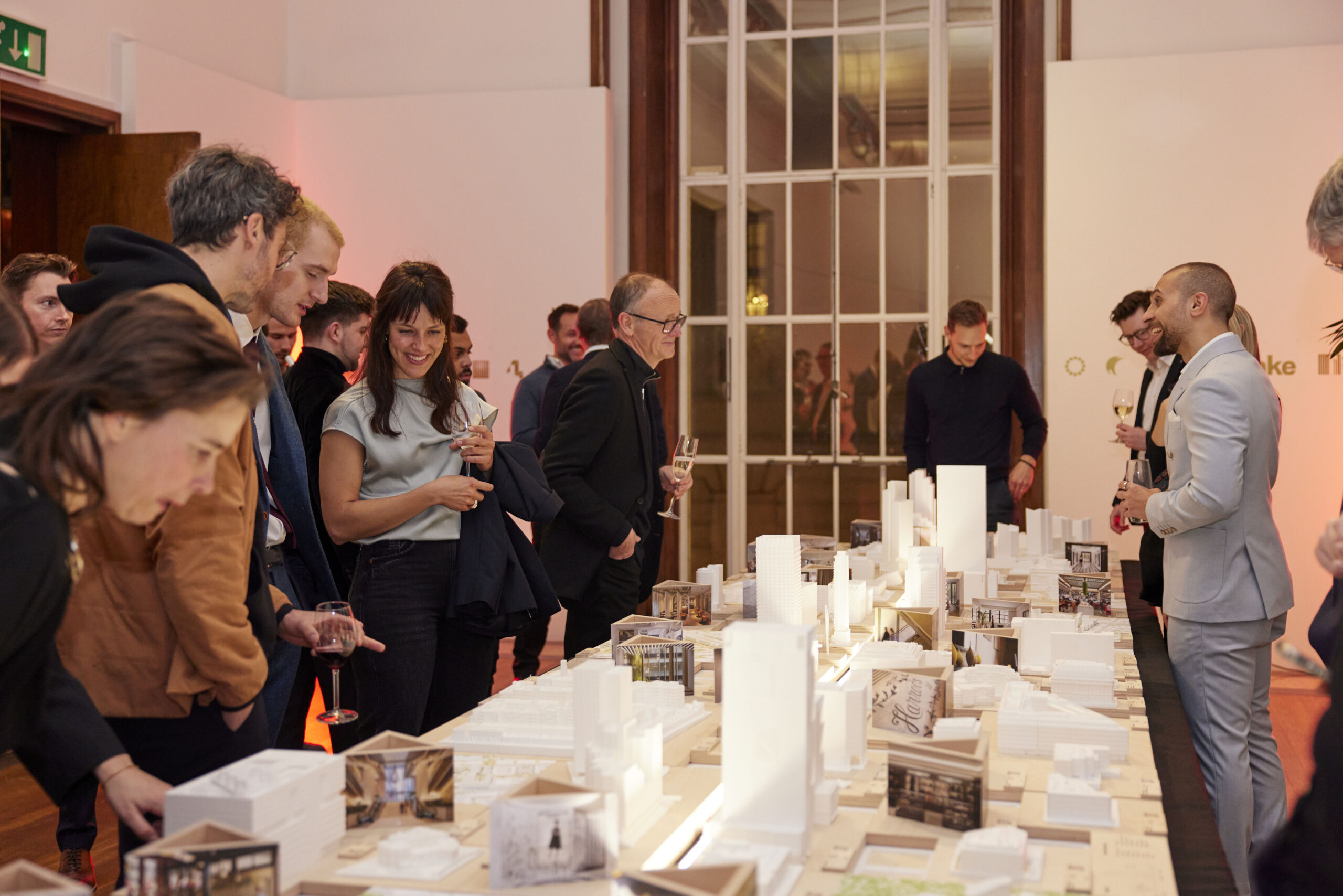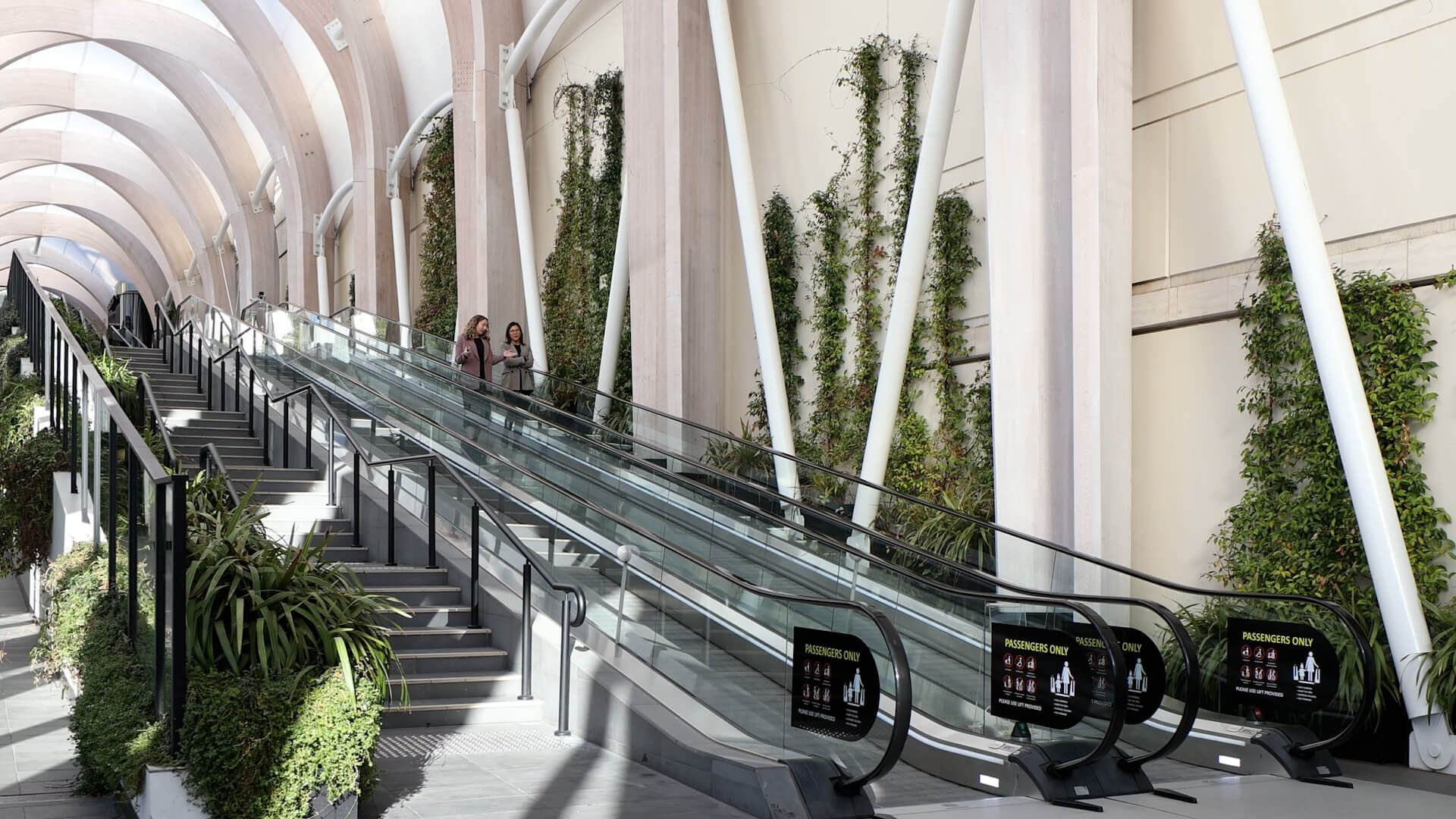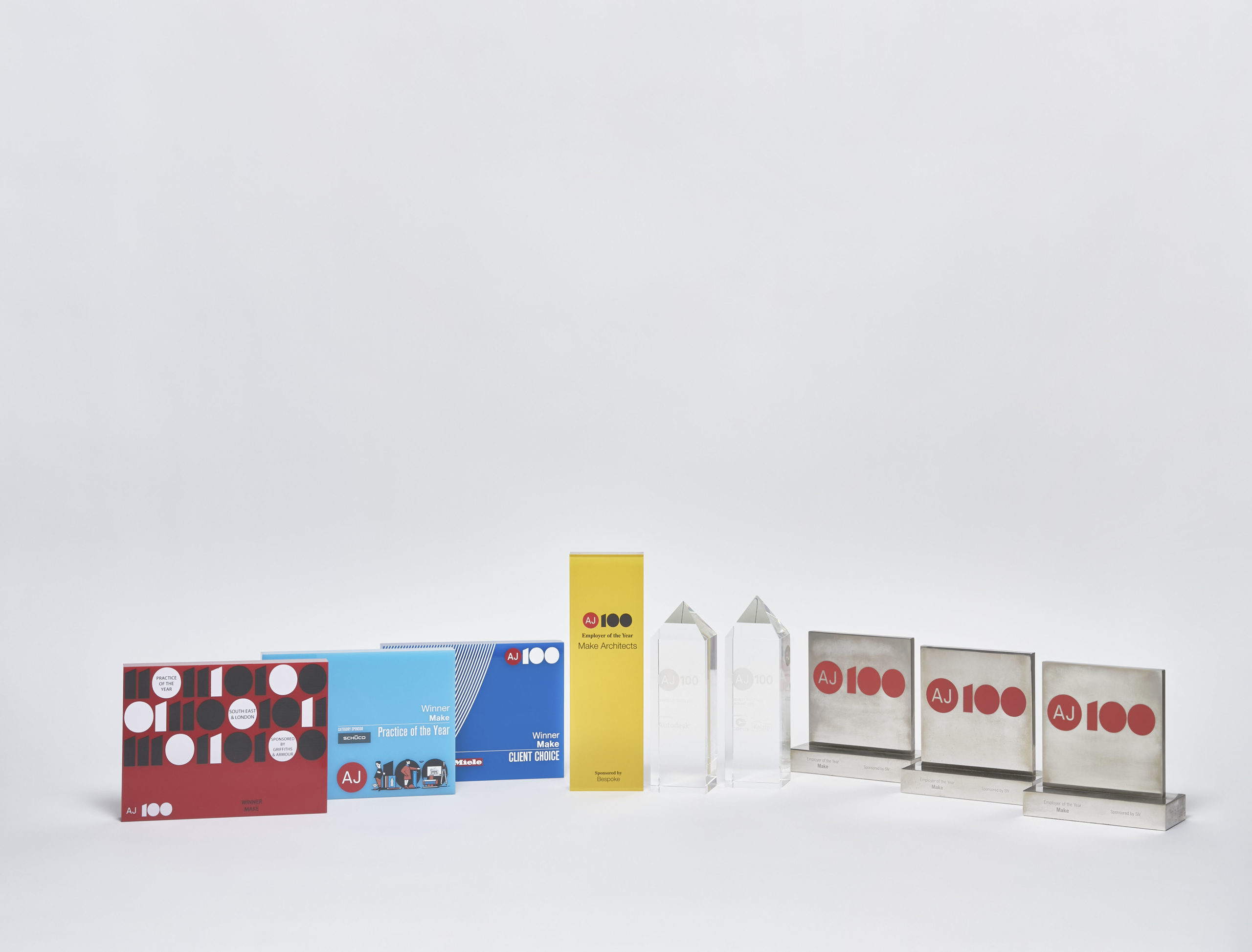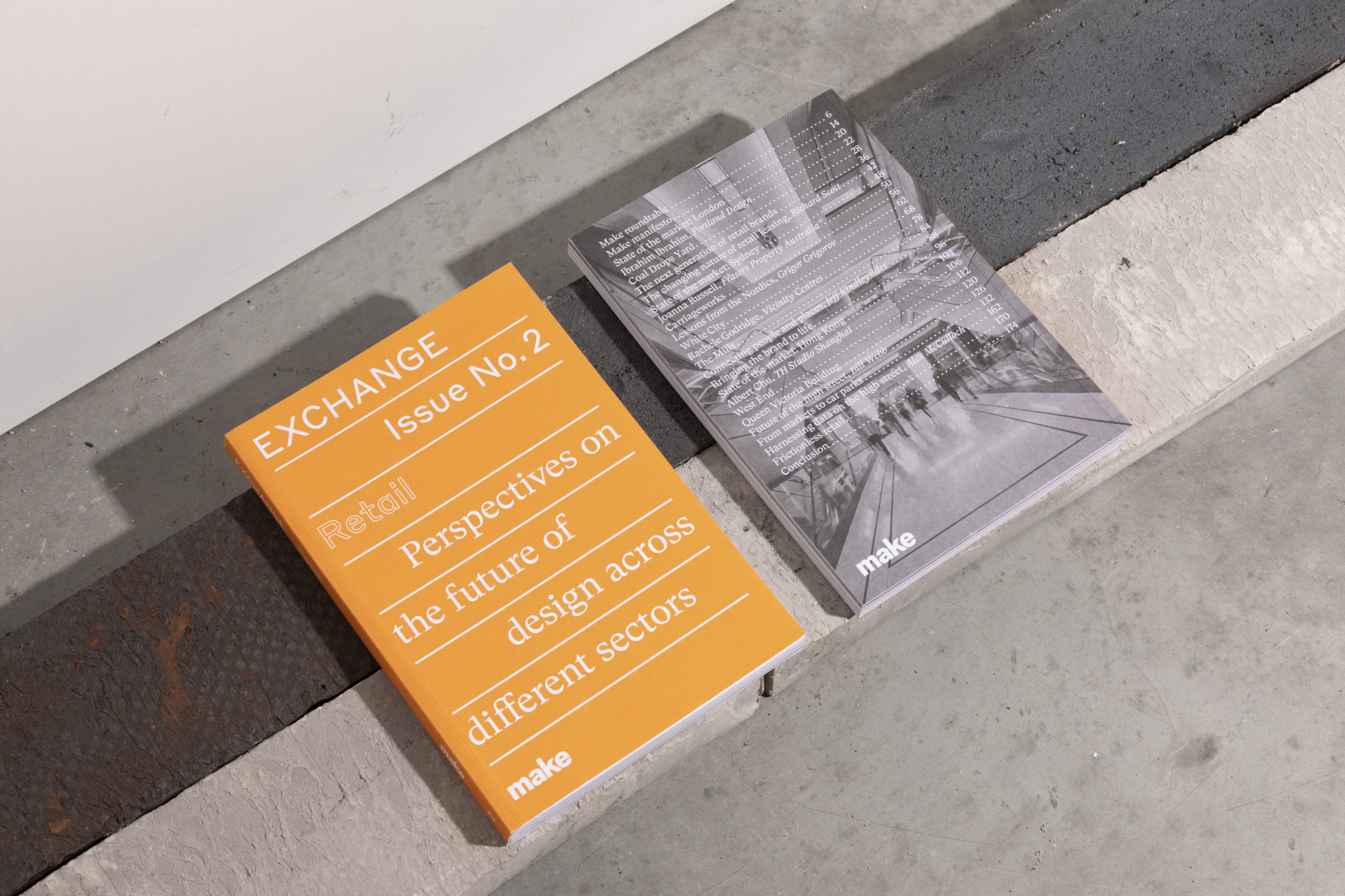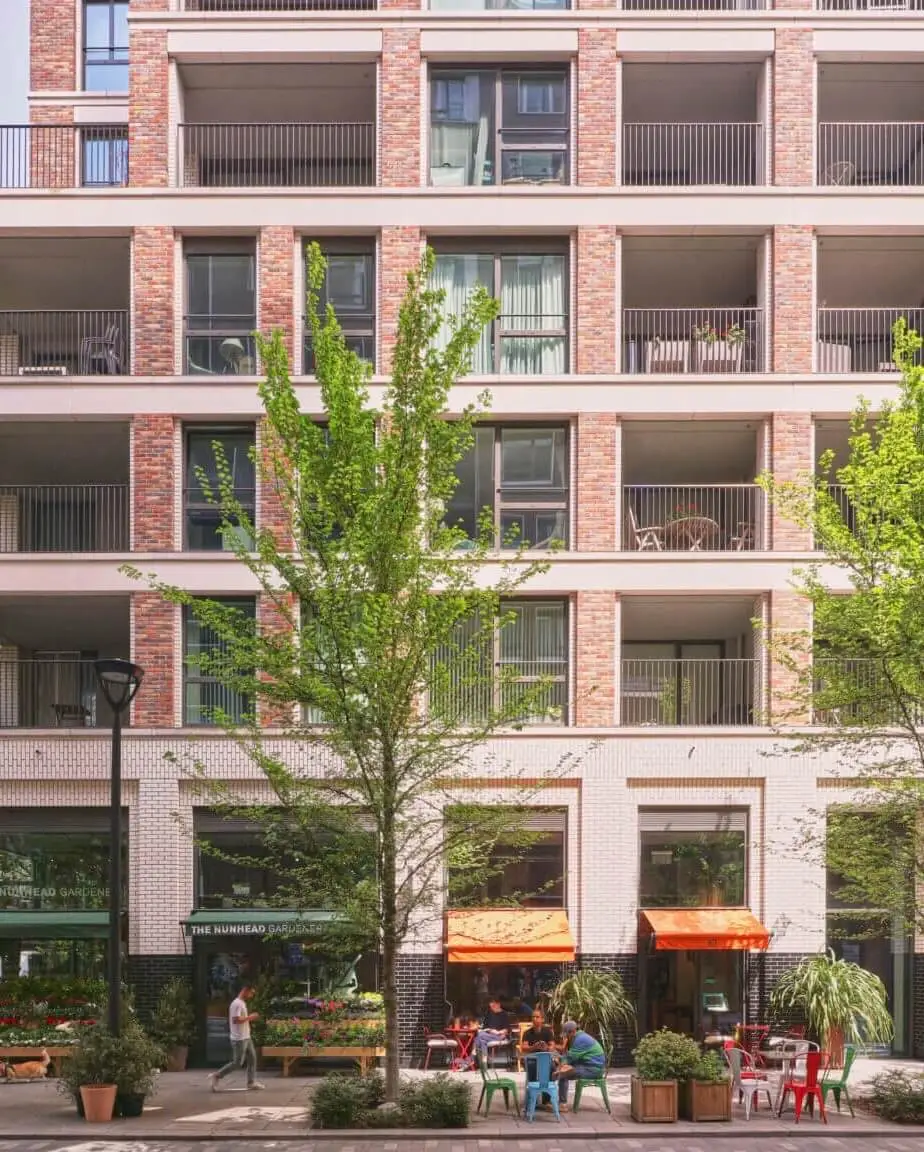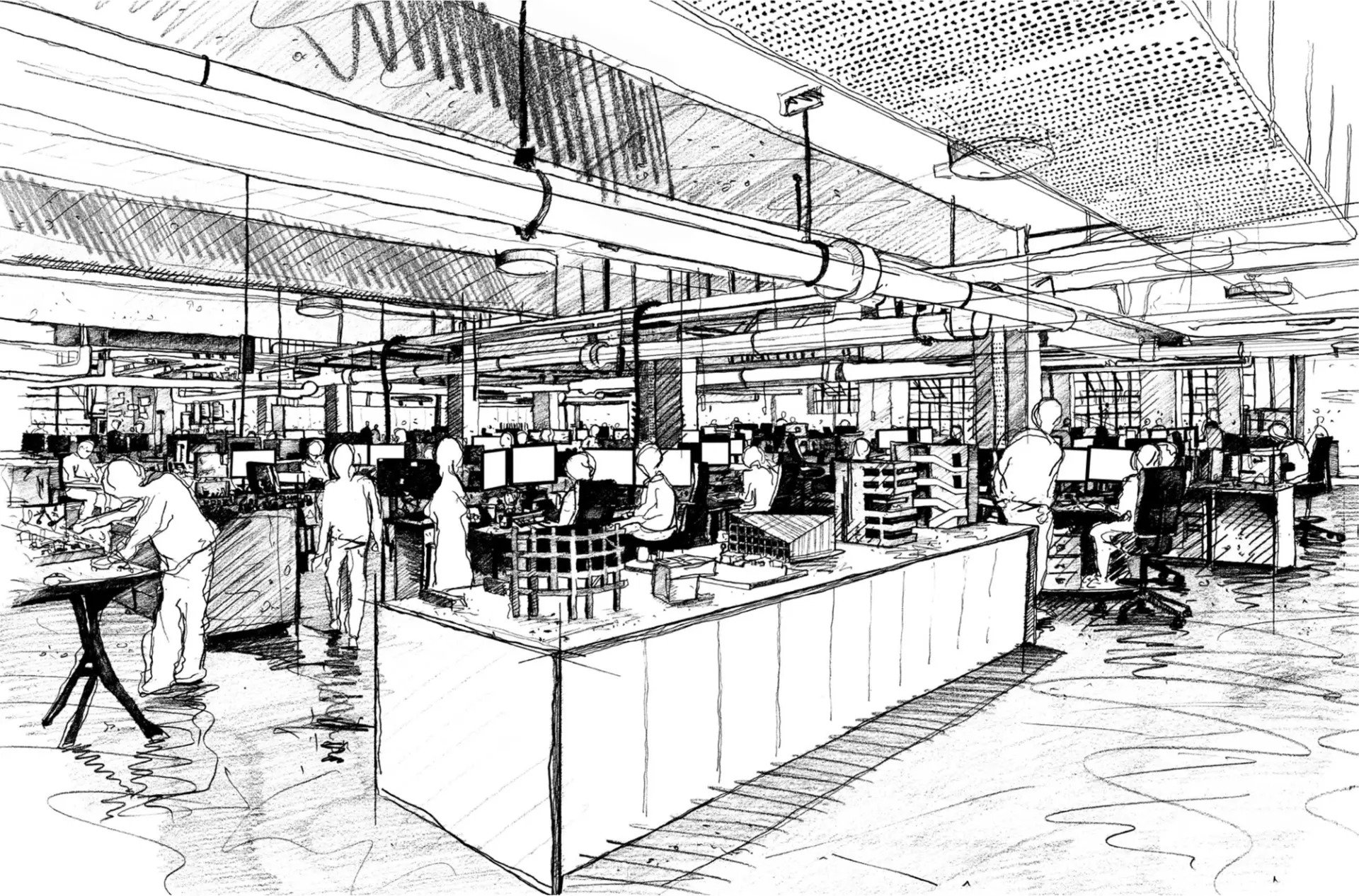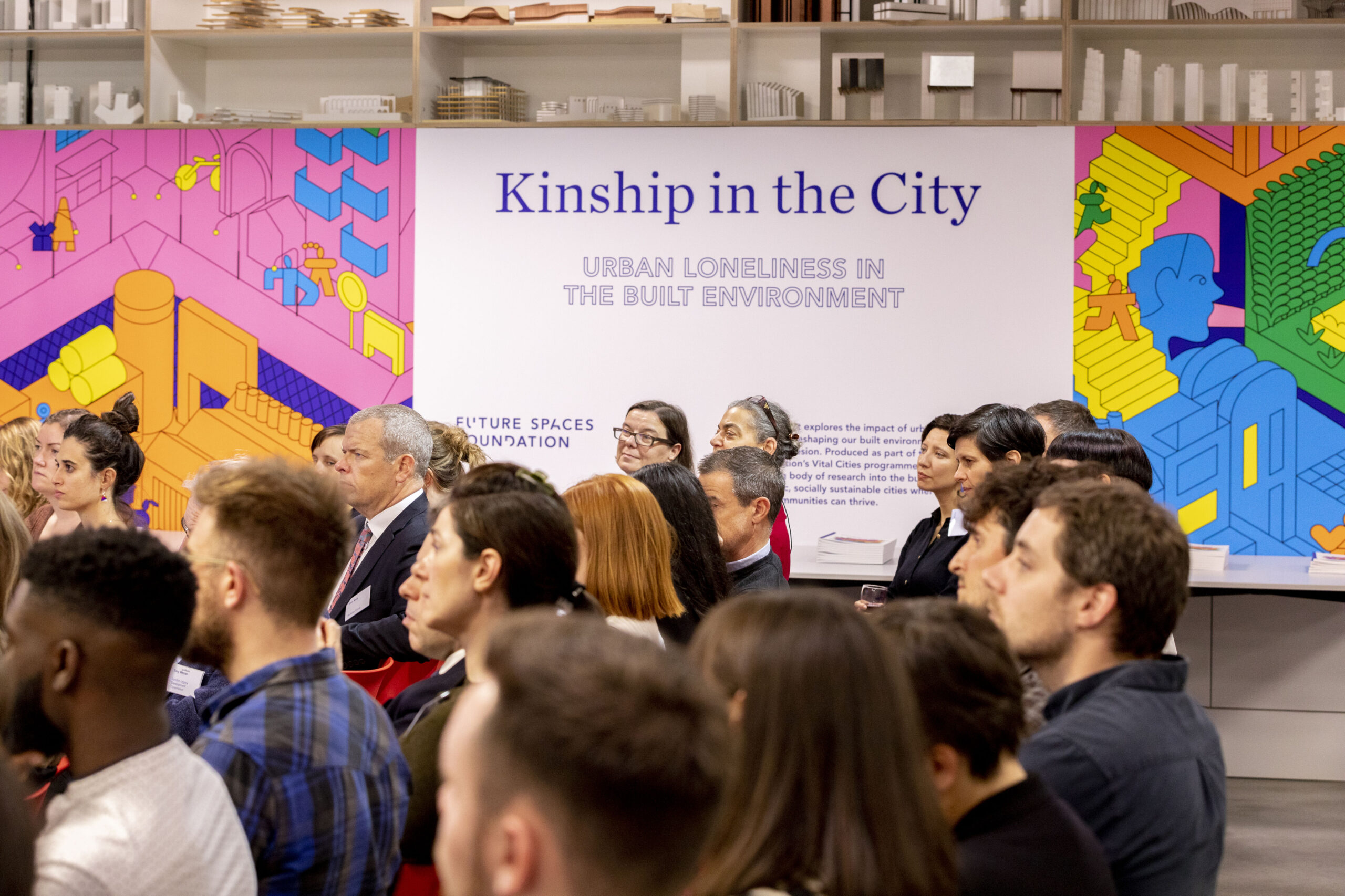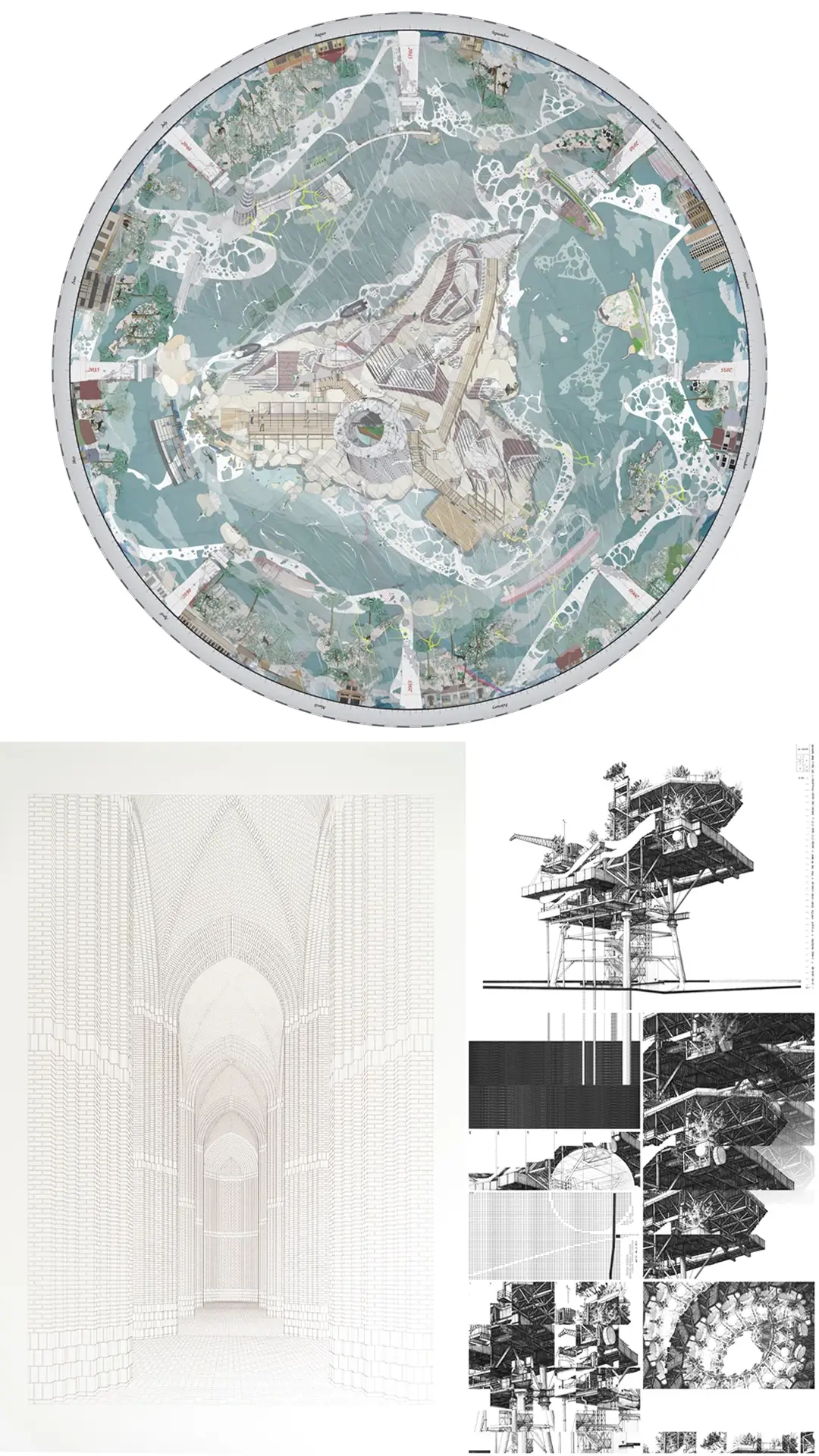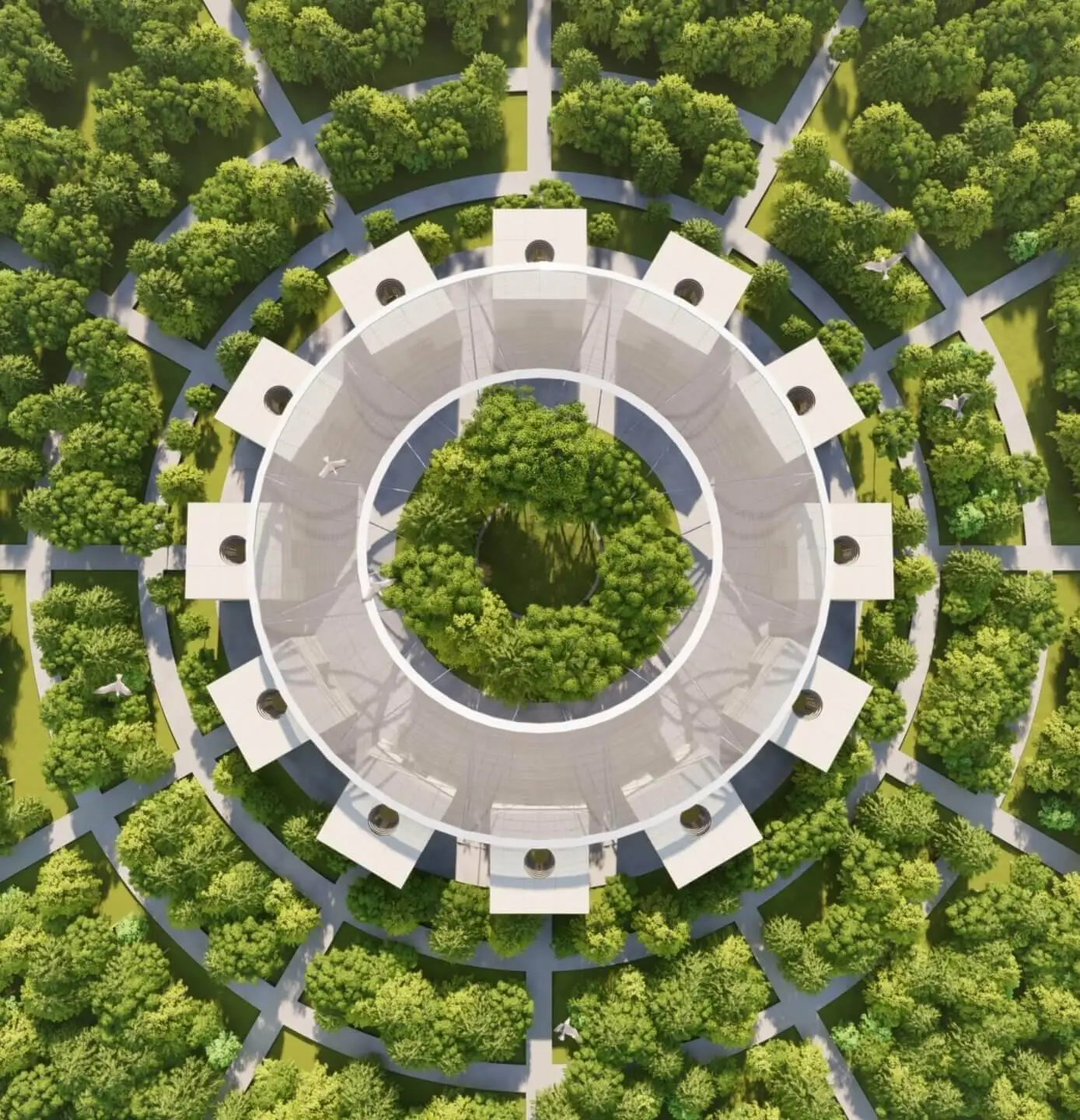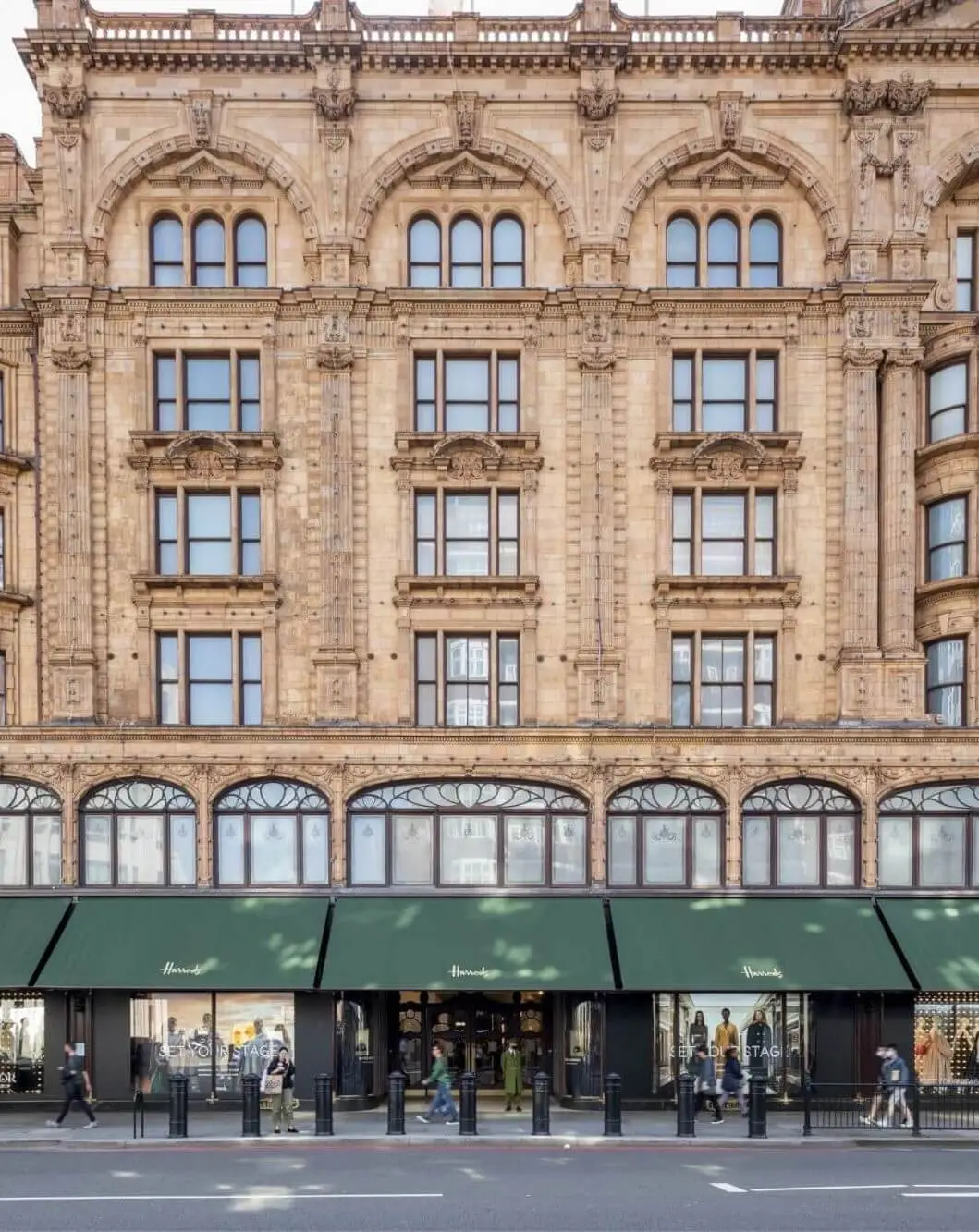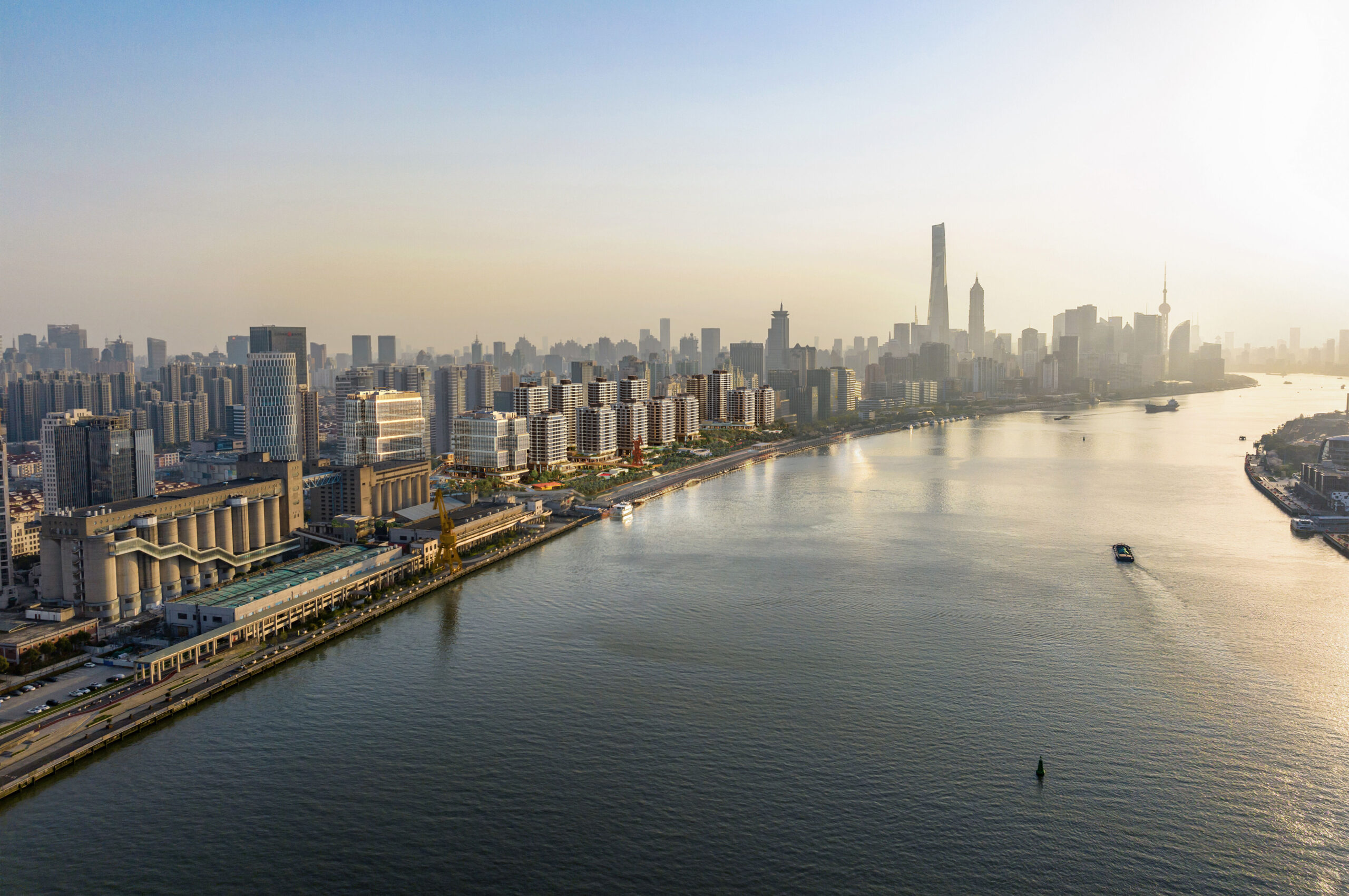
The workshop focused on maximising usable space while minimising embodied carbon (A1–A5)*. However, this carbon-tunnel-vision approach ignores the importance of architectural considerations like space quality, efficiency, floor alignment, fire safety, accessibility, daylight and other factors that are often overlooked in purely numerical analyses. Many emerging local plan retrofit policies in London also prioritise carbon reduction, potentially overlooking an architectural and contextual response.
We used our 80 Charlotte Street development as a case study for the workshop. Completed in 2020, 80 Charlotte Street is an award-winning mixed-use scheme with offices, residential units (including affordable housing), retail spaces and a public pocket park. The residential components are retrofitted from old office buildings, while the office portion is a new-build.
Initially, Make secured planning permission for a retention and extension scheme; however, site investigations revealed structural issues that made retention unviable at the time, leading to a new–build project that matched the scale and mass of the original retrofit proposal. If we were to undertake this project today, would we be required to implement the retention option? Over the course of 4 workshop groups, 80 Makers developed numerous permutations for the site. These were grouped into six main options, from baseline refresh (upgrade the building with no extra area) through to a complete new–build scheme.
Our experience in London has shown that structural engineering advice is crucial for determining the feasibility of retrofits, as it often significantly impacts the embodied carbon calculations. The age and condition of the building’s structure can win or lose the retrofit argument before an architectural response has even taken place.
When we started the project, the 80 Charlotte Street site comprised six identifiable buildings, not unlike many London blocks. It had a large 1960s office development (80–84 Charlotte Street and 89 Whitfield Street), several early-20th-century concrete frame buildings (23 Howland Street, 10–15 Chitty Street, and 67–69 Whitfield Street), and an industrial to office conversion – an old motion picture processing works at 71–81 Whitfield Street, which had been extended and knocked around numerous times. The courtyard acted as a car park and service area for the multiple buildings. The buildings each had their own constraints, limitations and merits, which represented an architectural challenge.

The workshop activity
Rules of the workshop included:
- Buildings must be upgraded to meet minimum standards before adding extensions or new construction.
- New buildings require a basement level.
- Extensions must remove the top floor of the existing building.

For new-build schemes, we assumed a number of 600kgCO₂/m² (pictured in green). This represents an efficient new-build for this type and size of site and brief. Refresh was assumed at 250kgCo₂/m² (shown in pink), primarily for MEP, as noted in my first blog. The infills, which fill in slabs with some new primary structure but are not considered standalone new builds, assumed a carbon expenditure of 350kgCO₂/m² (shown in orange). The vertical extensions to the existing building assumed 500kgCO₂/m² (shown in blue). While this may seem like a lot, the figure is often even higher for the typical amount of strengthening needed for existing structures.
Results
The completely new-build scheme achieves 57,958m2 of gross internal floor area (GIA) at 600 kgCO2/m2, whereas the ‘refresh’ scheme is 250kgCO2/m2 at 25,058m2 – 58% less area and 57% less carbon.
Option 2 avoids the introduction of infills (except at basement and ground floor), leaving external lightwells between the reimagined 1960s buildings and new–build elements. As an architectural and construction proposal, it is quite logical but underperforms on the embodied carbon by area of 474 kgCO2/m2, which is pushed up due to the greater proportion of new-build area.
There is no perfect answer when balancing only area and carbon, and on any given day, with a different design team and different experts, a different solution could be found, although we were left with a number of key takeaways:
- It’s better to infill void than significantly extend vertically.
- Only extend buildings with sufficient structural capacity to minimise strengthening for maximum area gain.
- Don’t be afraid to remove disjoined or inefficient buildings as you may need to work hard to get additional area in them (spending carbon, time and cost), sometimes a targeted new build infill works best to unify the site.
If we were to do the project again, we would most likely come back to the approach of the first planning application, whereby we kept and mostly extended the 1960s buildings, and infilled and replaced with efficient new structure. This, however, was the architectural response before carbon counting became a measure that we focus on, and distracted us from the simple principle of ensuring the best ideas comes to the surface. Let good design lead, and the numbers will follow.
*Embodied carbon (A1–A5) refers to the total carbon emissions associated with the entire construction process of a building, from the extraction of raw materials (A1) through to manufacturing (A3), transportation to the site (A4) and, finally, construction and installation on site (A5), essentially encompassing the ‘cradle–to–site’ stage of a building’s life cycle. It’s a way to measure the upfront carbon footprint of a building before it becomes operational.
